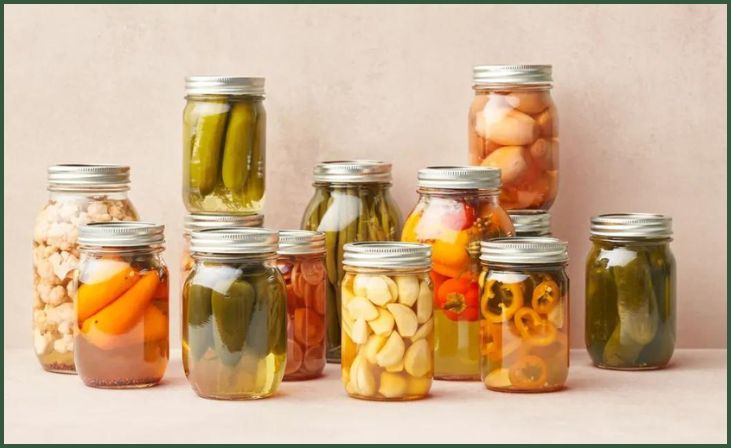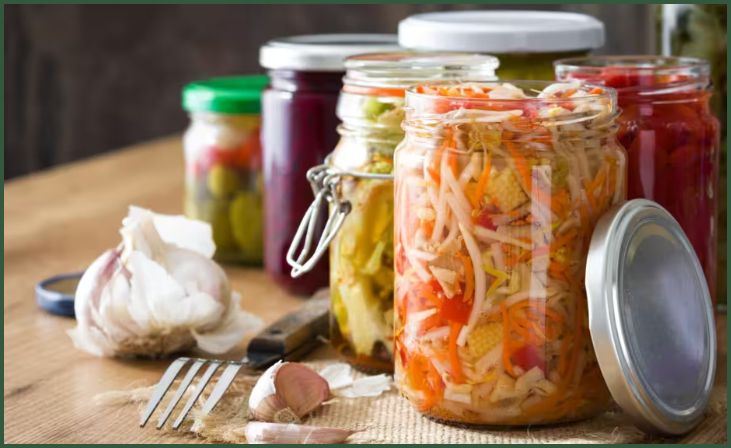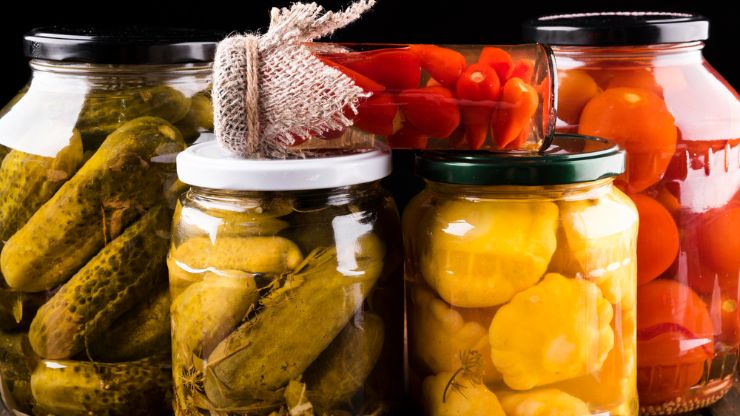How Does Lacto Fermentation Work – Welcome to the fascinating world of lacto fermentation! Within the pages of this comprehensive guide, we will embark on a journey into the intricate workings of lacto fermentation, a time-honored technique for preserving food while simultaneously enhancing its flavors and nutritional value. If you’ve ever found yourself curious about the inner workings of this entirely natural process, rest assured that you’ve arrived at precisely the right destination.
Lacto fermentation, although it may sound somewhat complex at first, is a method that our ancestors have employed for centuries. This method allows us to not only extend the shelf life of our favorite vegetables but also to unlock a spectrum of delightful taste profiles and enrich the nutritional content of our food. It’s a concept that beautifully marries tradition and science, offering a world of possibilities for anyone who’s willing to explore it.
So, whether you’re a seasoned enthusiast or a newcomer to the world of lacto fermentation, this guide will serve as your trusted companion, illuminating the path to understanding the wonders of this age-old practice. Let’s embark on this journey together and discover how lacto fermentation truly works, uncovering its secrets step by step.
Table of Contents
ToggleHow Does Lacto Fermentation Work?
Lacto fermentation is a venerable, natural preservation method that hinges on the power of beneficial bacteria. Let’s explore the fundamental process in detail:
Creating the Ideal Environment

To initiate the lacto fermentation process, you’ll require a handful of essential ingredients: vegetables, salt, and water. It might seem simple, but each component plays a crucial role. The salt, for instance, serves as a sentinel against harmful bacteria, allowing the friendly lactobacilli to flourish and work their magic on the food’s flavor.
Also Read:- Lacto-Fermentation versus Canning and Pickling
Beneficial Bacteria at Work
In the world of lacto fermentation, the unsung heroes are undoubtedly the lactobacilli. These friendly bacteria have an incredible knack for consuming the natural sugars present in the vegetables. As they do so, they produce lactic acid as a byproduct. Not only does this lactic acid act as a natural preservative, but it also imparts that tangy, mouthwatering flavor that we associate with fermented delicacies.
Anaerobic Environment

Creating an anaerobic environment is pivotal to the success of lacto fermentation. This involves submerging the vegetables in a brine or liquid. By doing so, you create an oxygen-free zone that discourages the growth of undesirable oxygen-dependent bacteria and mold, allowing the lactobacilli to thrive.
Time and Patience
Lacto fermentation is an exercise in patience. It’s not a swift process but rather one that unfolds gradually. The time required can vary depending on factors like temperature. Some ferments might take just a few days, while others may demand several weeks. In this world of instant gratification, lacto fermentation reminds us of the rewards of waiting for something truly special.
The Science Behind It
To truly grasp how lacto fermentation operates, it’s worthwhile to peek into the science underpinning it. At the core of the process are microorganisms, and their metabolic activities are the key to success. Friendly bacteria like lactobacillus break down the sugars in the vegetables and produce lactic acid. This acid isn’t just a flavorful byproduct; it’s a natural preservative, extending the life of the food.
Mastering the Art

Lacto fermentation is as much an art as it is a science. Once you’ve got the basics down, it’s time to explore the creative side of the process. Try out different kinds of vegetables, spices, and times for fermentation. The more you practice, the more adept you’ll become at crafting your unique fermented creations. It’s a journey of exploration, experimentation, and ultimately, culinary mastery.
Is Lacto-Fermentation Safe For You?
Lacto-fermentation is a traditional food preservation technique that has been used for generations. It’s not only a fantastic way to extend the shelf life of your favorite vegetables but also to enhance their flavors and nutritional value. However, when it comes to any food preservation method, the question of safety is paramount. So, is lacto-fermentation safe for you? Let’s explore this important aspect.
Don't just scroll, subscribe!
BuzzTrail's unique web-stories are the cure for boredom you've been waiting for.
Lacto-fermentation, when done correctly, is indeed a safe and natural way to preserve food. Here are some important things to think about:-
1. Cleanliness and Sterilization: The process begins with clean equipment. It’s crucial to sterilize the jars, containers, and utensils you’ll be using to ensure there are no harmful bacteria present. This step is essential in preventing contamination.
2. Salt as a Safeguard: The addition of salt to the ferment serves as a natural preservative and also creates an environment where beneficial lactobacilli can thrive. The salt concentration inhibits the growth of undesirable bacteria and pathogens, further enhancing safety.
3. Proper Submersion: To create an anaerobic environment, it’s vital to submerge the vegetables in brine or liquid. This prevents the growth of oxygen-dependent bacteria and mold, further ensuring the safety of your ferment.
4. Temperature Control: Maintaining the right temperature during the fermentation process is crucial. The ideal range is typically between 60-70°F (15-21°C). While fermenting at lower temperatures can be slower, excessively high temperatures can lead to safety concerns.
5. Observation and Smell: Regularly check your ferment. If you notice any unusual smells, discoloration, or mold growth, it’s best to err on the side of caution and discard the batch. A healthy ferment should have a pleasantly tangy aroma.
6. Practice Good Hygiene: Remember that cleanliness is paramount when handling the ingredients. Wash your hands and ensure the vegetables are clean and free from contaminants before starting the process.
7. Storage: Once your ferment is complete and you’re satisfied with the flavor and texture, store it in the refrigerator. The cold temperature will slow down the fermentation process and keep your lacto-fermented vegetables fresh and safe for consumption.
Also Read:- Stages Of Fermentation
In summary, lacto-fermentation is a safe and reliable method of food preservation when you follow best practices, maintain cleanliness, and pay attention to key details. It’s an age-old technique that has stood the test of time, providing us with not only delicious and nutritious foods but also a sense of connection to our culinary heritage. Enjoy the journey of lacto-fermentation, and savor the unique flavors it brings to your table while prioritizing safety.
Conclusion
In conclusion, Lacto fermentation is a fascinating and ancient method of food preservation that not only extends the shelf life of your favorite vegetables but also enhances their taste and nutritional value. By understanding how lacto fermentation works and experimenting with different ingredients, you can unlock a world of delicious possibilities in your own kitchen.
FAQs
Q: Can I lacto-ferment any vegetable?
Q: Can I lacto-ferment any vegetable?
A: While most vegetables can be lacto-fermented, some work better than others. Cabbage, cucumbers, and carrots are excellent choices for beginners.
Q: Is lacto fermentation safe?
Q: Is lacto fermentation safe?
A: When done correctly, lacto fermentation is a safe and natural way to preserve food. Just ensure your equipment is clean, and you follow best practices.

